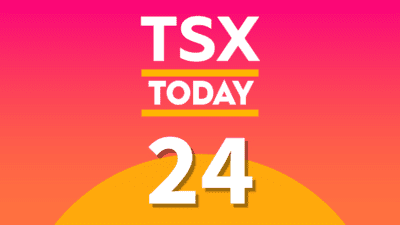The current bull market is bound to end sooner or later, and when it does, retailers across the board will experience a pullback in traffic and sales, as consumers re-evaluate their spending. That re-evaluation has, in the past, resulted in a shift towards retailers that offer greater value, such as Dollarama Inc. (TSX:DOL).
Dollarama is the largest dollar store operator in the country, but the +1,000-location-strong chain is not a typical dollar store. The aisles are lined with an array of products that are unique and intriguing to what is typically found in other dollar store chains. That may be part of the reason that it’s so hard to buy just one thing when going into a Dollarama, and why the retailer has realized incredible growth over the past decade.
Let’s start by taking a look at Dollarama’s recent quarterly earnings.
In the most recent quarter, Dollarama reported strong sales of $938.1 million, representing an increase of 9.8% over the same quarter last year. Comparable store sales in the quarter grew by 5.5% over and above the 5.8% growth realized in the same quarter last year.
EBITDA for the quarter came in at $253.8 million, or 27.1% of sales, representing a 12.2% increase over last year. Operating income saw a similar hike of 11.6% in the quarter, coming in at $235.1 million.
On a per-share basis, the company earned $1.45 per diluted share, representing an impressive 16.9% increase over the $1.24 per diluted share reported in the same quarter last year.
Is a market slowdown coming?
One of the concerns on investors’ minds lately is the prospect of a market slowdown, and what impact it could have on Dollarama’s incredible growth. In the last quarter, the company opened 25 net new stores, and critics of the stock have been quick to point out that the nearly insatiable growth of Dollarama over the past few years has been slowing.
There are few reasons why this is concern can be put to rest.
First, Dollarama’s growth may slow, but it will continue. Experts are quick to note that the dollar store market in Canada is nowhere near as saturated as it is in the U.S., with the market easily able to support additional locations. This is one of the reasons that, last summer, several prominent dollar chains were (and are still) considering expanding their presence into the Canadian market.
Second, as the economy slows, consumer buying preferences will shift more towards dollar store-type retailers and away from the larger, more traditional retailers. This was witnessed in the past few market slowdowns and will likely continue to be a key contributor to growth should a market slowdown occur.
That nearly recession-proof moat also extends, in some regards, to the emergence of online retailers. While online heavyweights continue to take an increasingly larger share of revenue from traditional brick-and-mortar companies, dollar stores and grocery stores in particular are still shielded by the unique, fragile, and perishable nature of products that make shipping unprofitable.
In my opinion, Dollarama remains an intriguing investment for those investors looking at long-term growth. Dollarama’s dividend, which provides a paltry yield of 0.33%, is hardly a reason enough to consider investing in the company, but investors should note that Dollarama has actually increased the dividend with increasing frequency, the most recent being a 9% uptick this past quarter.
Dollarama currently trades at over $146 per share, with a P/E of 32.43.







